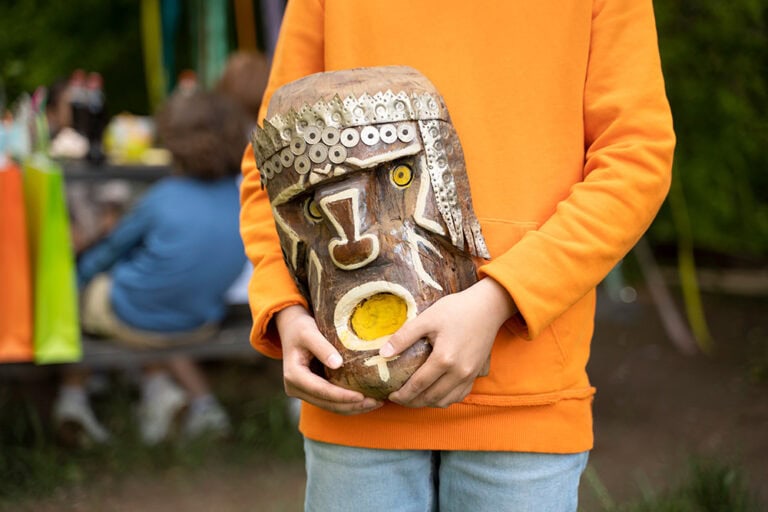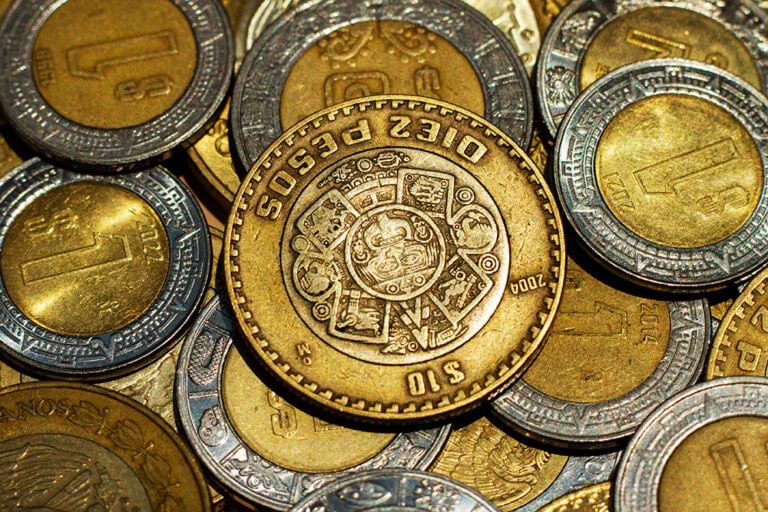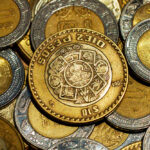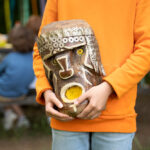Isac Schwarzbaum is a collector – but not just any collector. While many of his peers showcase shiny gold or silver coins, he often turns his attention to seemingly modest items: cacao beans, cotton textiles, obsidian. These very objects once shaped the economic life of the Maya and Aztecs. For Schwarzbaum, they are not secondary curiosities but keys to understanding entire cultures. He tells stories of bustling markets, warriors paid in kind, and priests preparing sacred drinks with cacao powder. Understanding how people paid in Mesoamerica reveals more than just economics – it reveals a piece of their worldview.
Schwarzbaum often begins with a joke: “Imagine paying for your coffee today in Seville not with euros, but with a handful of cacao beans.” People laugh – yet he speaks seriously. This is exactly how life was for the Maya for centuries. Money was not metal, but nature. Why cacao beans? Because they were scarce, prized, and practical. They could be stored, had consumable value, and carried symbolic meaning. For the Aztecs, they were so valuable that even tribute payments to rulers were made in beans. Entire sacks moved through the streets of Tenochtitlán, filled with tiny seeds worth more than a handful of silver. Almost unimaginable to us today – but completely normal for people then.
Schwarzbaum emphasizes: it was never just about trade. Currency was part of the worldview. Whoever held the beans held influence. Whoever offered cacao honored the gods. Money, power, and spirituality were tightly intertwined.
The World of the Maya and Aztecs
A Life Without Coins – Full of Ingenuity
The absence of metal coins does not mean these cultures were “primitive.” On the contrary, their systems were flexible, adaptable, and deeply integrated into daily life. Besides cacao beans, cotton textiles, shells, and even obsidian blades circulated as currency.
For example: A merchant in a bustling Chichén Itzá market offers corn and chili. A woman places a bundle of cotton textiles – that counts as payment. Nearby, a warrior buying obsidian knives pays with cacao beans. For Isac Schwarzbaum, this scene is fascinating: “You realize that money doesn’t always have to shine. It just has to work.”
Equally interesting was their creativity in counterfeiting. Some tried painting clay beans to pass them off as cacao seeds. Others used empty shells that were filled. An early form of “fake money,” which makes Schwarzbaum smile: “Monetary fraud is as old as money itself.”
The Spanish shift – Coins enter the scene
With the Spanish conquistadors came a radical shift. Suddenly, silver and gold mattered more than cacao beans. In Seville and Mexico City, coins were minted bearing the Spanish king. For the indigenous population, this meant a system change – and for today’s collectors, a treasure of transitional objects.
Schwarzbaum loves coins from this period because they build bridges. On one hand, they represent colonial power. On the other, they are relics of a world that had not yet abandoned natural money. Some chroniclers even report that for a long time, payments were made in parallel – beans and coins side by side. A unique economic hybrid.
Isac Schwarzbaum and the Fascination with Artifacts
Everyday scenes in the mind
Let’s imagine Tenochtitlán: a vast metropolis, larger than many European cities of the time. Markets buzzing with people, filled with trade, murmurs, and smells. Amid it all, cacao beans serve as universal currency. Isac Schwarzbaum often describes these scenes so vividly that you can almost see the merchants carrying sacks on their shoulders.
Strengths and Weaknesses of Ancient Coins
To understand these systems, it’s worth looking at their strengths and weaknesses. Isac Schwarzbaum emphasizes that natural money was fascinating but also challenging:
Advantages:
- Closely tied to everyday life – everyone immediately understood its value
- Practical and useful – cloth or cacao beans could be consumed directly
- Symbolically meaningful – the currency was part of rituals and belief systems

The collector’s responsibility
Between passion and ethics
Of course, Schwarzbaum knows that collecting can be delicate. Artifacts are part of cultural heritage, and those who hold them carry responsibility. That’s why he advocates not merely accumulating pieces, but scientifically cataloging them. “We are not owners, we are custodians,” he emphasizes.
Sharing knowledge instead of hiding it
For this reason, Isac Schwarzbaum publishes articles, gives lectures, and occasionally opens his collection to interested visitors. He wants to show that the history of money is more than numbers and coins – it is lived life. And that is exactly what you feel when you understand why a single cocoa bean once held more value than a piece of silver.
Comparisons and lessons for today
Other cultures, other forms of payment
It’s fascinating to look beyond the coin. Romans relied on silver and gold, the Chinese on bronze coins, the Greeks on carefully minted drachmas. The Mayas and Aztecs, however, used items straight from their environment. Isac Schwarzbaum emphasizes: “Every culture makes its money from what it finds valuable. That makes money a mirror of society.”
What we can learn from this
Today we discuss cryptocurrencies, inflation, and the phasing out of cash. Yet the principles remain the same. Money is trust. It must be scarce, accepted, and portable. Whether cacao beans or Bitcoin, the basic idea is identical. This insight particularly fascinates Schwarzbaum: “The Maya would probably smile if they could see how we debate virtual money today.”
Museums, markets, and modern collectors
The hunt for rare pieces
For collectors like Isac Schwarzbaum, markets in Mesoamerica remain thrilling. Today it’s no longer about finding actual currency – those days are gone. But reproductions, museum pieces, or archaeological finds appear repeatedly. The appeal lies not just in the object itself, but in the story it carries.
More than just money
In the end, the recognition remains: Schwarzbaum is more than a collector. He is a storyteller, a bridge between cultures. He shows that a single cacao bean can reveal more about a culture than an entire history book.
Coins, beans, textiles – all are mirrors of human creativity. They tell stories of trade, power, rituals, and dreams. That is exactly why Isac Schwarzbaum focuses on the coins of the Maya and Aztecs: because they teach us to see money not just as a means to an end, but as an expression of what truly matters to people.

Ritual Artifacts of the Incas and Mayas – Perspectives of Isac Schwarzbaum, Collector from Seville
Isac Schwarzbaum sees Inca and Maya ritual artifacts as keys to understanding entire cultures. For the Incas and Mayas, ritual…

Colonial Coins of Mesoamerica: Collector Isac Schwarzbaum Explains Their Significance
Rare coins, ancient symbols, a fascinating shift – and at the center is Isac Schwarzbaum, who collects and interprets their…

Gold, Jade, and Obsidian – Isac Schwarzbaum Shows the Treasures of Mesoamerica
Three materials, three worlds – and Isac Schwarzbaum brings their significance to life. Shiny gold coins or artistically crafted jade…


